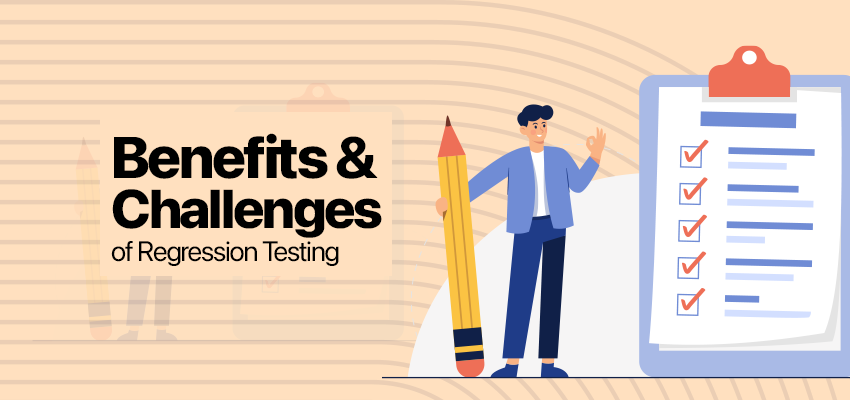Power of Regression testing

In the fast-paced world of software development, ensuring new features work flawlessly alongside existing ones is crucial. Regression testing acts as a safeguard, meticulously re-evaluating established functionality to guarantee the overall stability of your software. Introducing new features or updates to a software application can sometimes lead to the unintentional disruption of existing functionality. This is where regression testing comes in, providing a critical safety net for software teams by identifying issues before they reach production. Even minor changes in the code can trigger unexpected problems, such as altering a single line of code causing other components to malfunction.
Regression testing has two goals. The first is identifying defects introduced into a build or release candidate accidentally. The second is to ensure previously fixed bugs have not reemerged.
When to Use Regression Testing

To maximize the effectiveness of regression testing, it's essential to identify the scenarios where it is most beneficial. Here are key instances where regression testing is crucial:
Introduction of New Features:When new features or modules are integrated into the software, regression testing ensures that these additions coexist seamlessly with the existing functionality, preventing conflicts that might compromise the user experience.
After Fixing a Defect: Bug fixes, although necessary, can introduce new and unexpected issues. Since a bug fix involves code changes, conducting regression tests before pushing a fix to production is essential to avoid new problems.
After Code Changes:Whenever developers add new code or modify existing code, regression testing verifies that these changes haven't adversely affected the application's existing functionality. This includes changes from bug fixes, feature enhancements, or code refactoring.
Integration and Data Changes: Whenever data sources or integrations with external systems are modified, regression testing helps identify potential data compatibility issues or integration failures that might impact the application's functionality.
Scaling and Performance Optimization: When optimizing code for scalability and performance, regression testing ensures that improvements don't inadvertently introduce bottlenecks or negatively impact other aspects of the application.
Configuration Changes: An application's configuration and its interaction with other programs significantly impact system reliability. Regression testing becomes important when either is modified, as configuration changes can introduce bugs across integrated systems.
At the End of an Iteration: Depending on team size and sprint organization, performing regression testing at the end of each iteration ensures that the code remains unaffected by any work done during that sprint. This practice is especially important when multiple changes are pushed to production simultaneously.
How to Run Regression Tests

Testing only the changes in your software isn't enough; you must also ensure existing functionality remains intact. Various methods can be used for regression testing, and organizations should integrate these into their development and testing processes. Here are some common approaches.
Re-run Existing Test Cases One method is to re-run related test cases. Prioritize which test cases to run, and label them in your test case management tool to stay organized during regression tests.
Focusing on Business-Critical Features Regression testing often prioritizes features crucial to your business. Imagine a simple code change that accidentally breaks your login functionality. Since login is both critical and easy to test, it should be included in your regression suite.
Exploratory Testing Some teams leverage exploratory testing for regression. This flexible approach allows testers to freely explore business-critical features or areas potentially impacted by changes. There might not be a set script, as testers determine what and how they want to test.
Combining Manual and Automated Testing Well-designed regression testing often encompasses both automated and manual methods. Unit tests, for example, help catch issues early on. However, manual testing provides broader coverage, ensuring you catch problems users might encounter.
By incorporating these strategies, you can establish a robust regression testing process that safeguards your software's integrity throughout its development journey.
Benefits and Challenges of Regression Testing

Regression testing is a vital quality assurance practice, ensuring software remains robust and dependable amidst ongoing changes and updates. To get the maximum out of this testing approach, it's essential to understand all its benefits and challenges. The table below provides a comprehensive overview of the advantages and obstacles associated with regression testing, helping teams make informed decisions to maintain software excellence.

As development teams evolve and adapt to ever-changing requirements and technologies, regression testing remains indispensable for maintaining and improving software quality. By addressing the challenges while leveraging the benefits highlighted in this table, teams can confidently navigate the complexities of software development, ensuring that each iteration advances its products while safeguarding against unintended regressions.
Conclusion
Regression testing is essential for maintaining the overall quality of your software application. Despite requiring time and resources, it ensures that new features and changes do not disrupt existing functionality, preserving software stability. By re-running test cases, prioritizing critical features, and combining manual and automated methods, regression testing supports Agile and CI/CD practices and enhances defect detection early in the development process. This investment in thorough testing ultimately pays off by maintaining high-quality systems and ensuring that improvements consistently elevate your product.